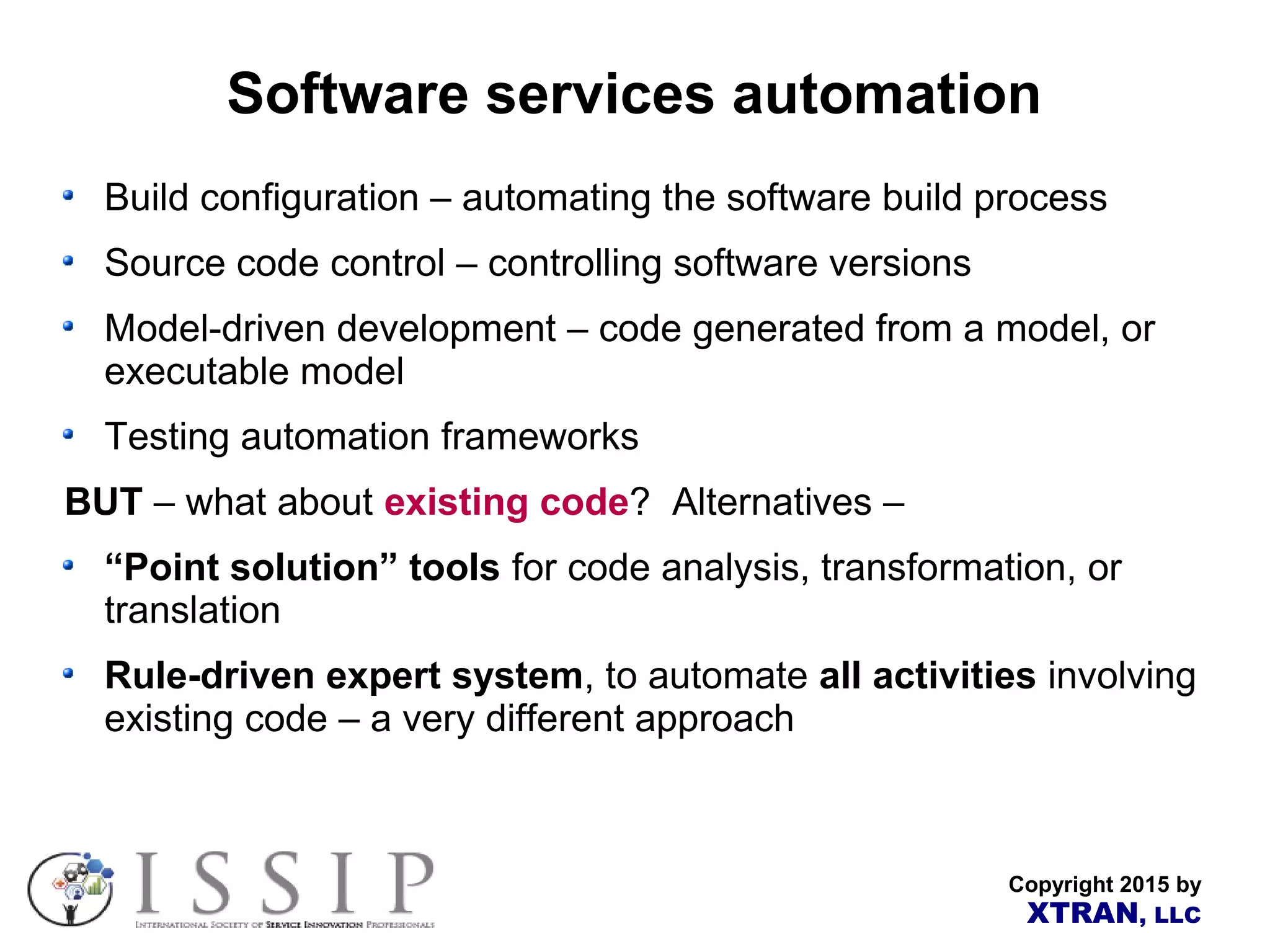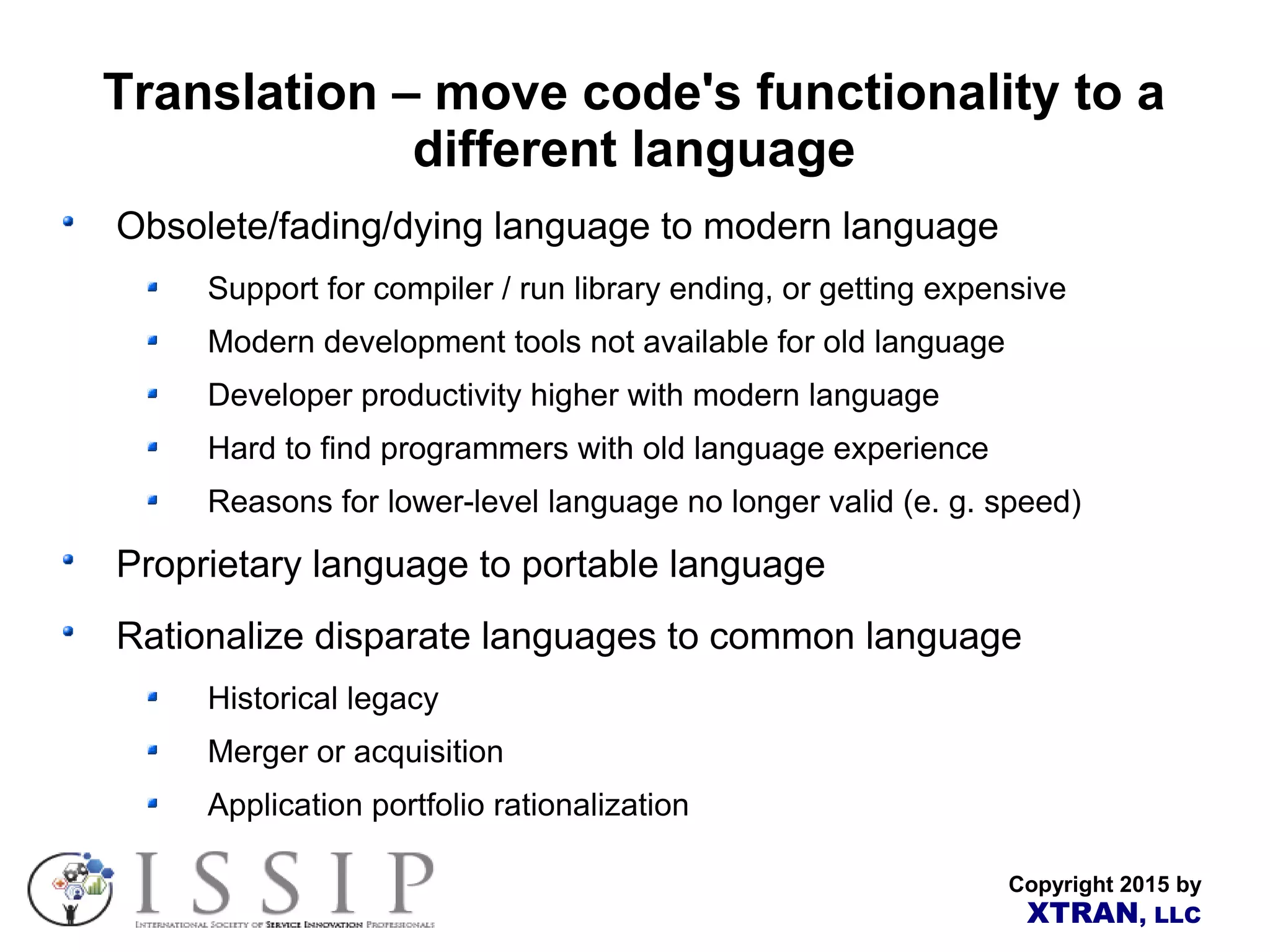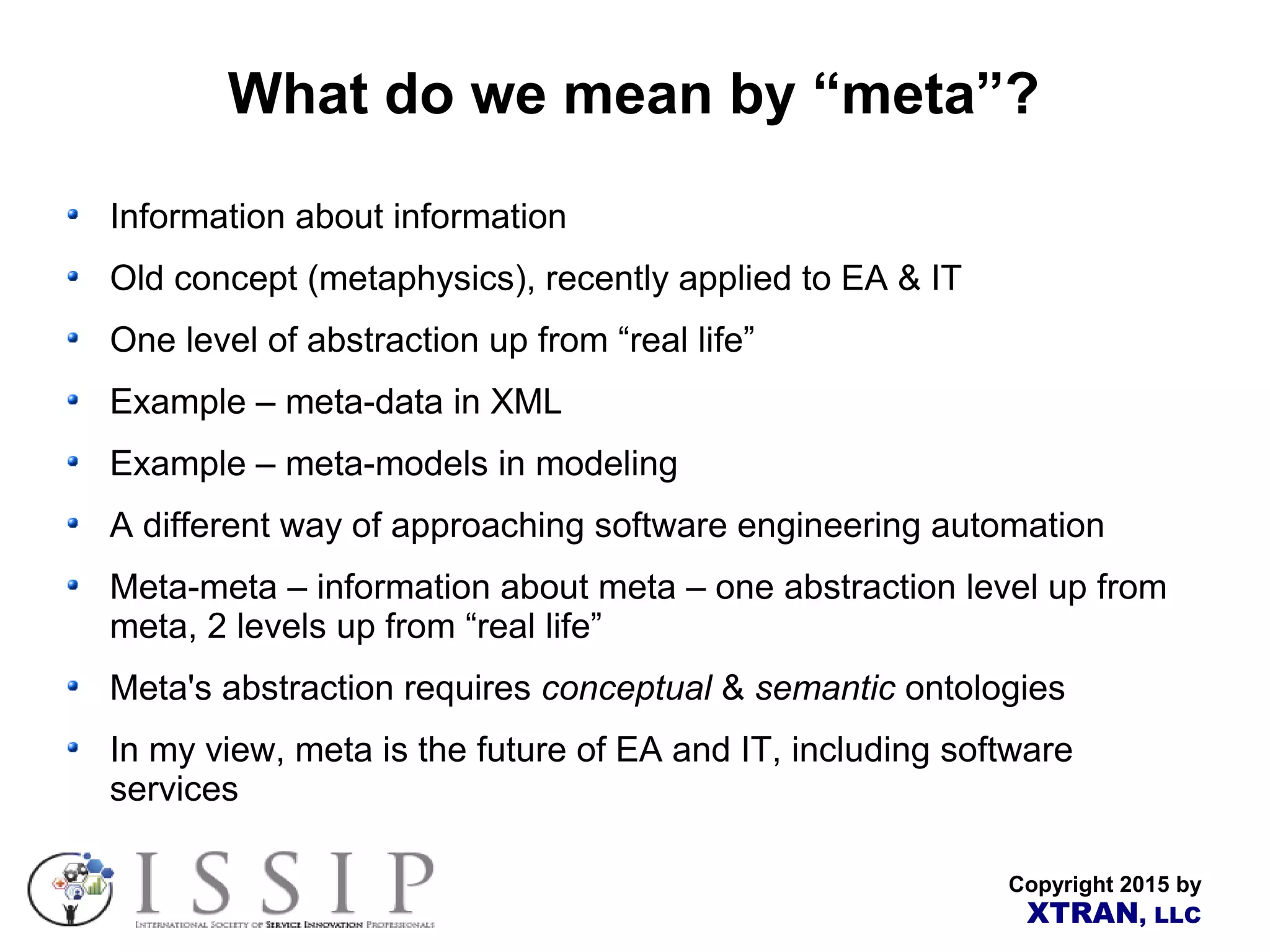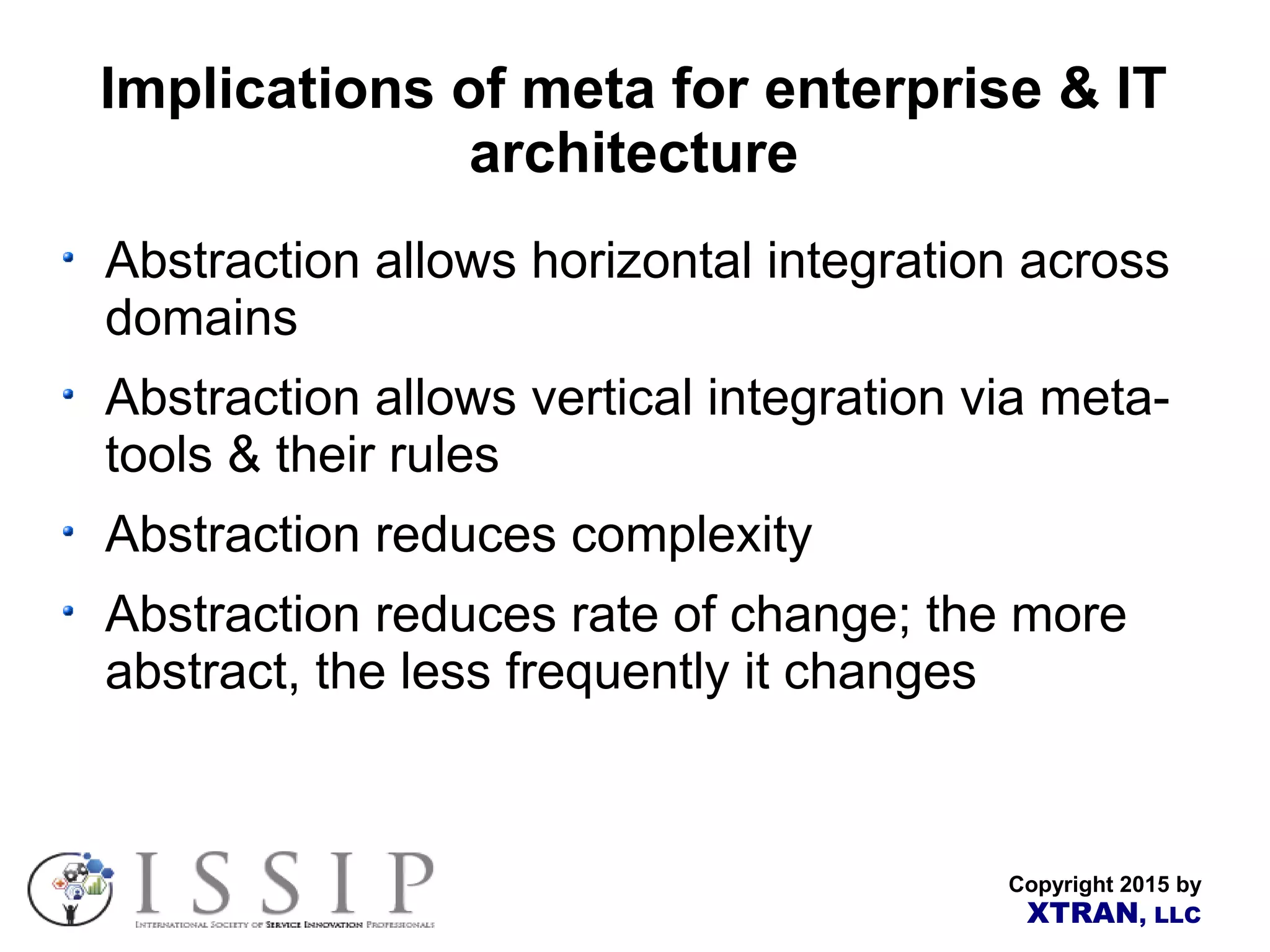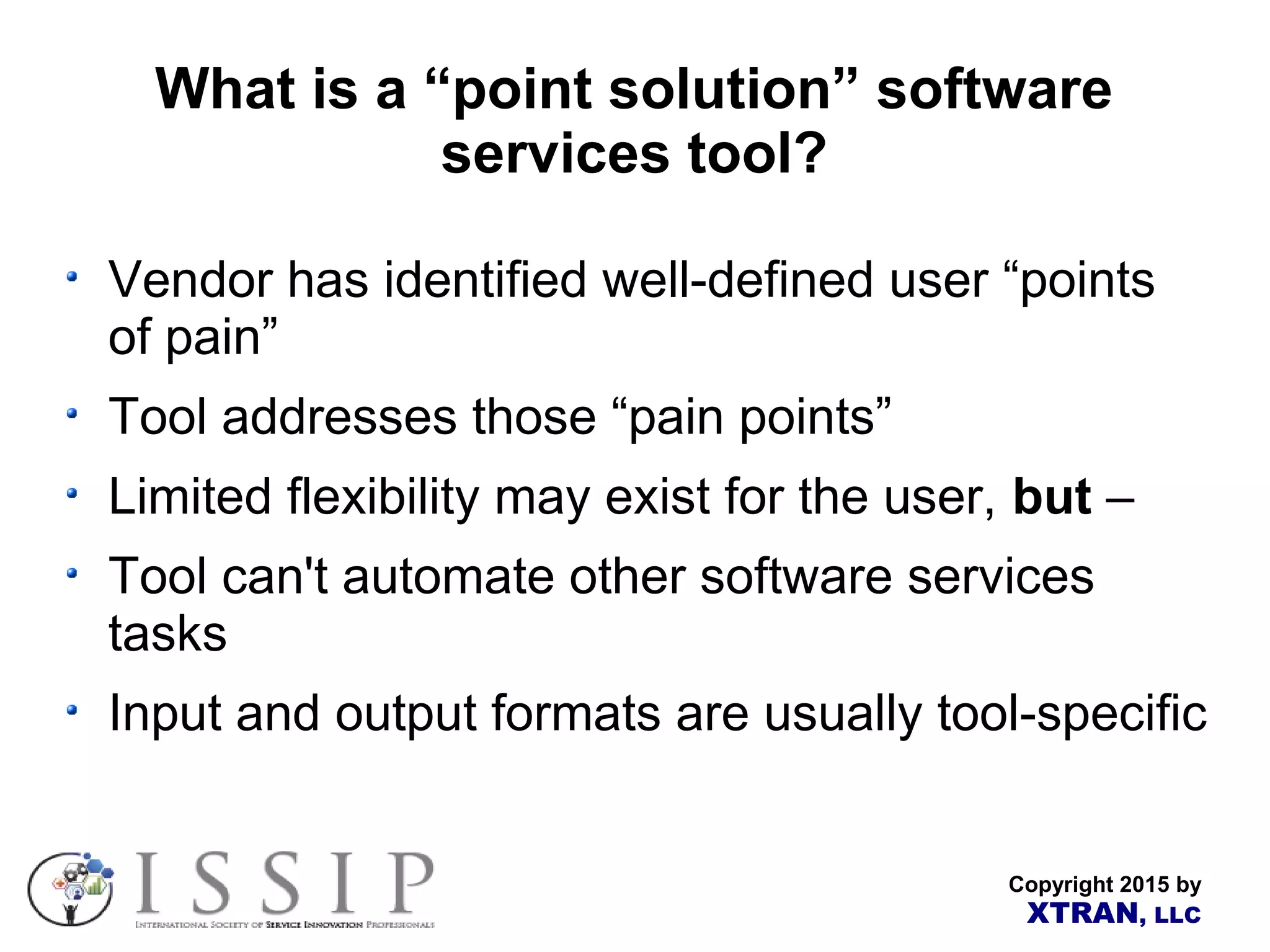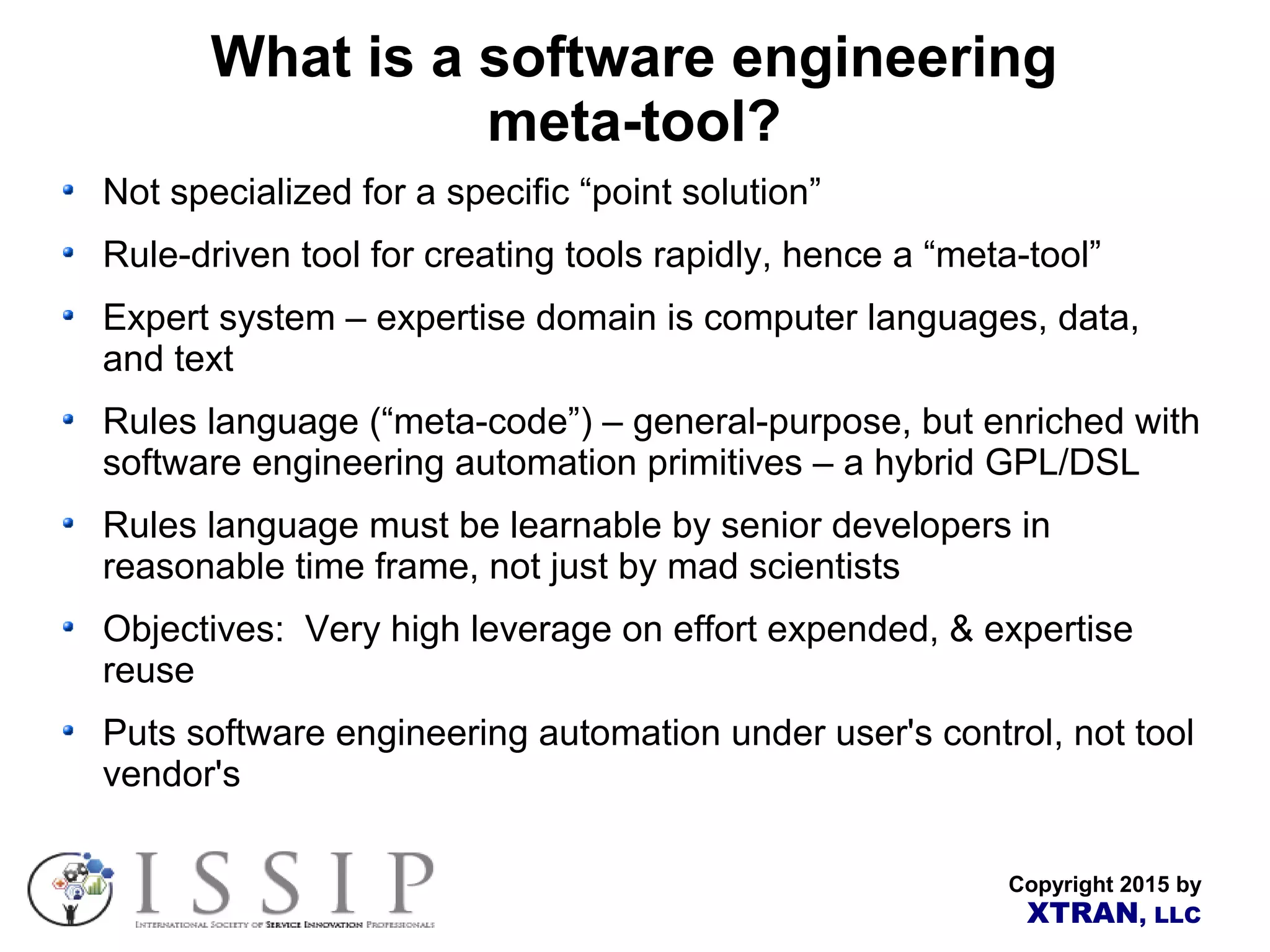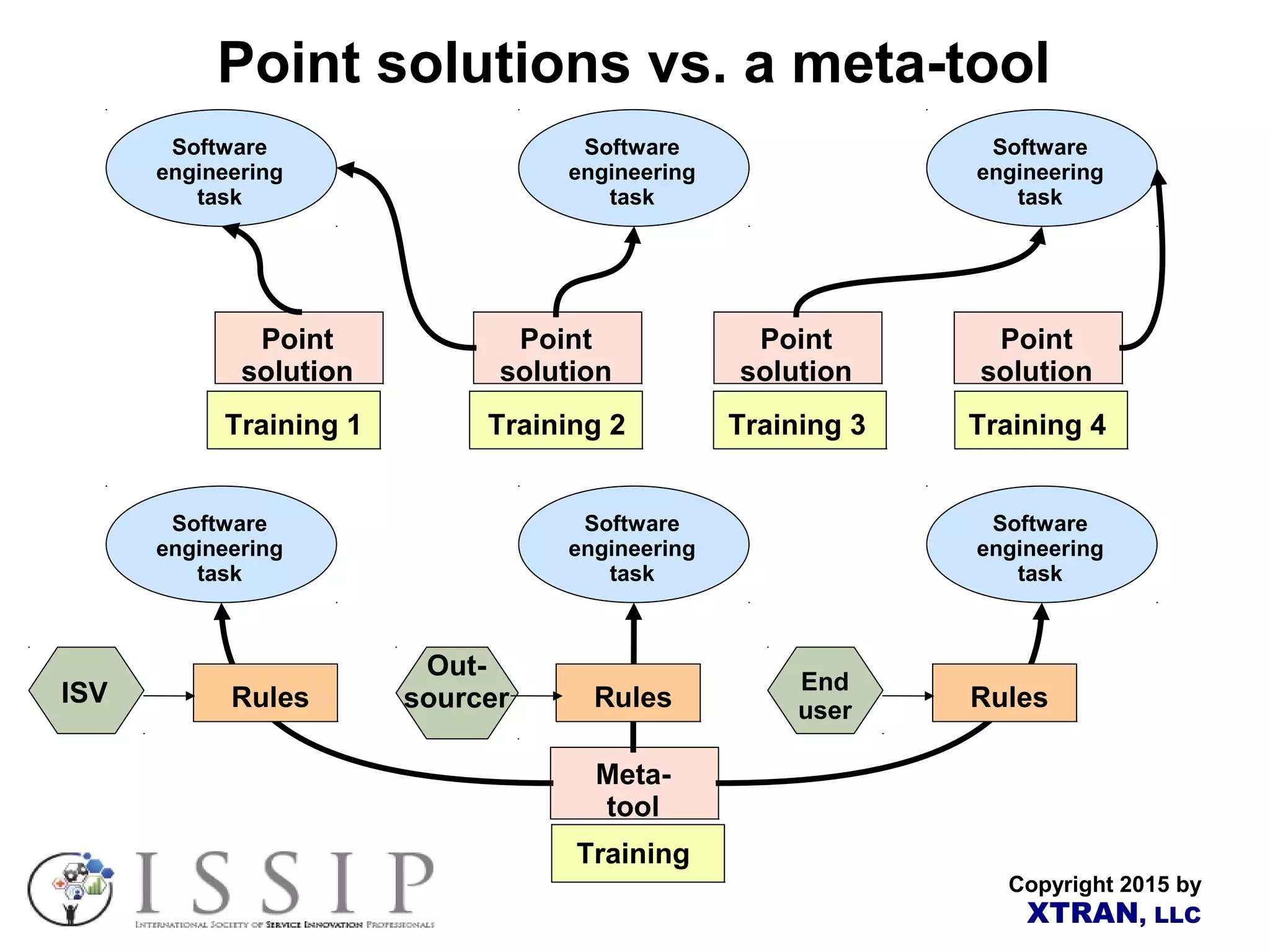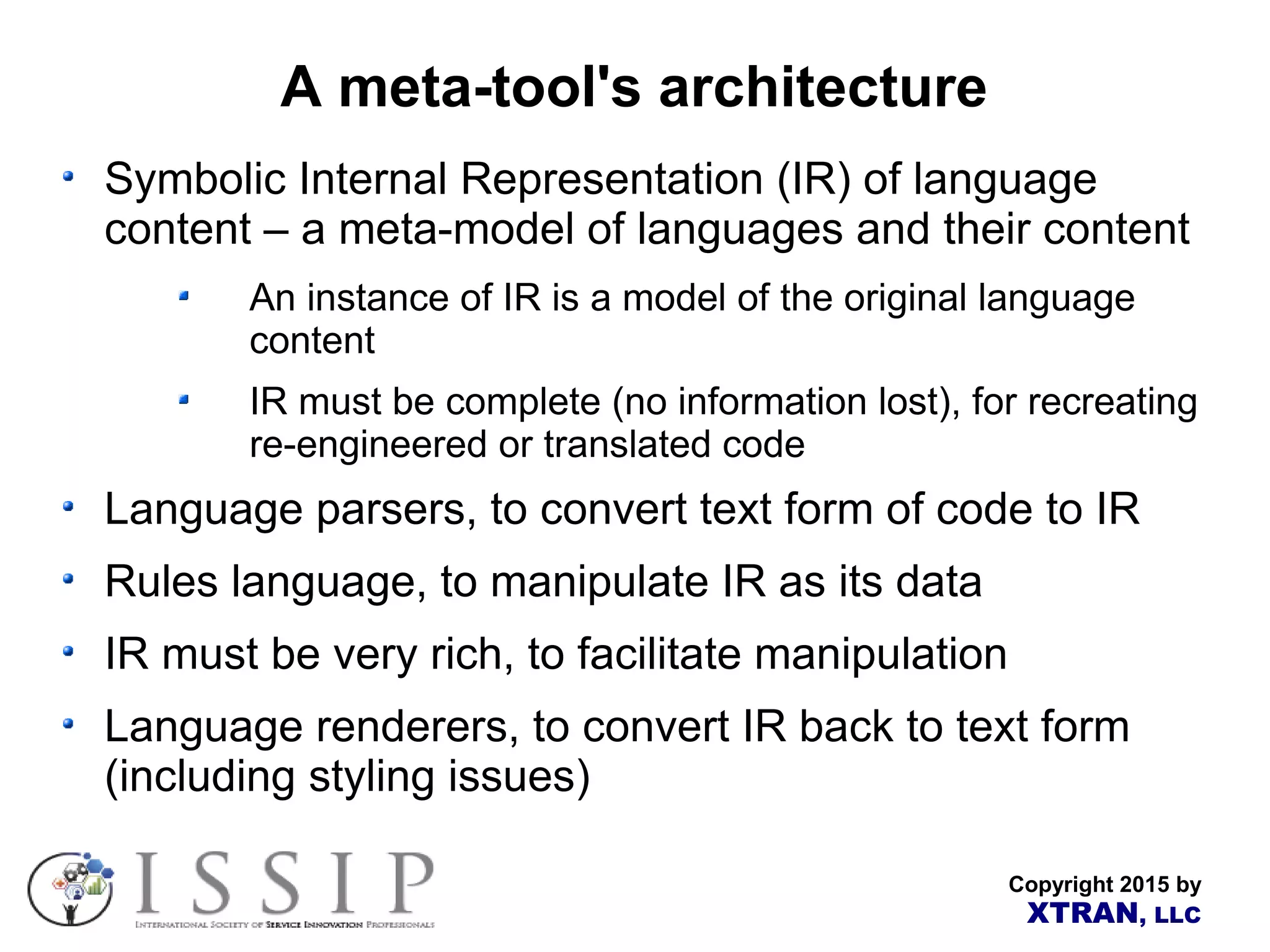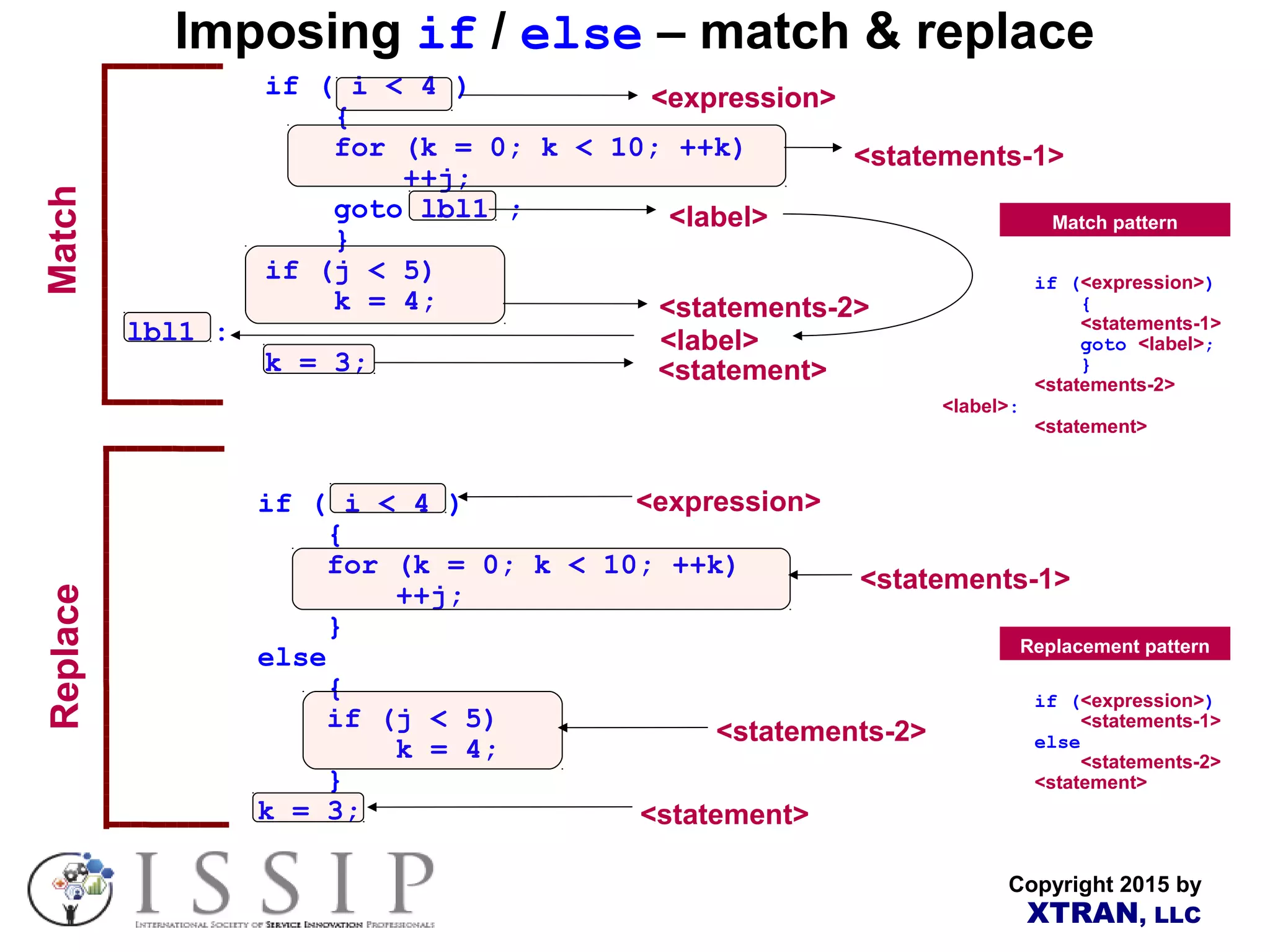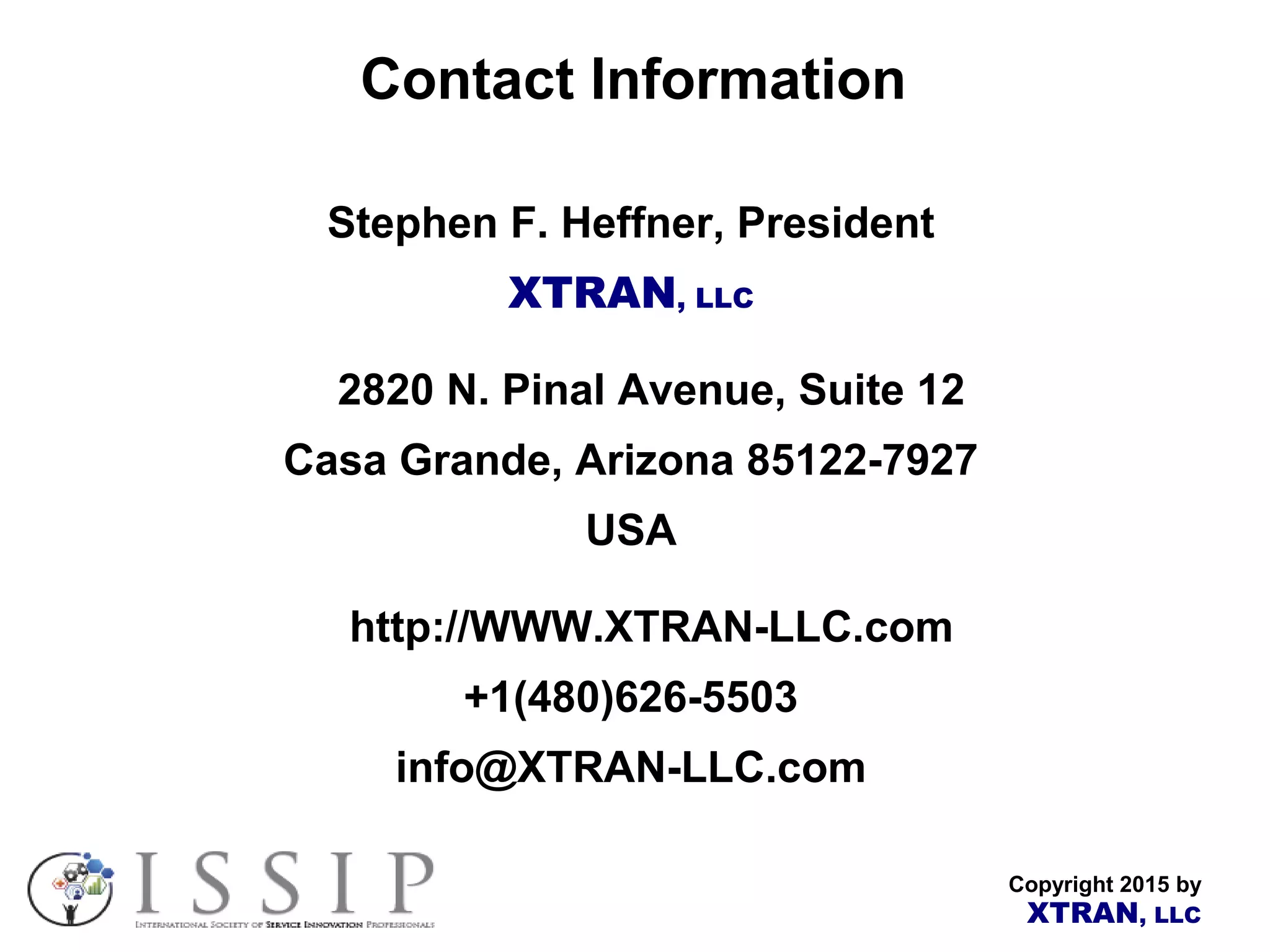The document discusses software engineering automation through the use of a meta-tool. A meta-tool is a rule-driven expert system that can rapidly create software engineering tools by capturing expertise in the form of rules. This provides high leverage and reuse of expertise compared to individual point-solution tools. The meta-tool would utilize a symbolic representation of code to facilitate code analysis, re-engineering, translation and generation through rule-based pattern matching and manipulation of the representation. This flexible approach could automate any software task for a given language, avoiding limitations of individual point solutions.

